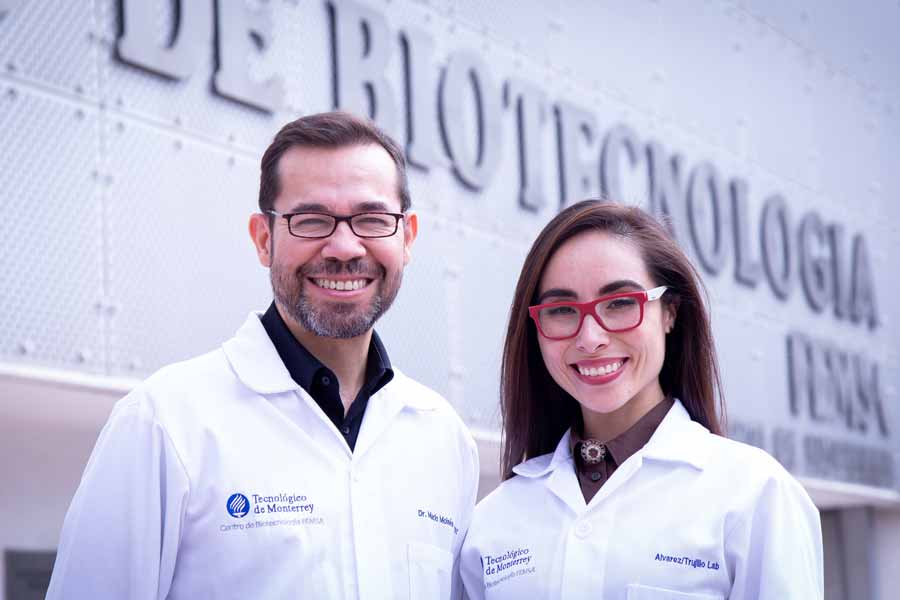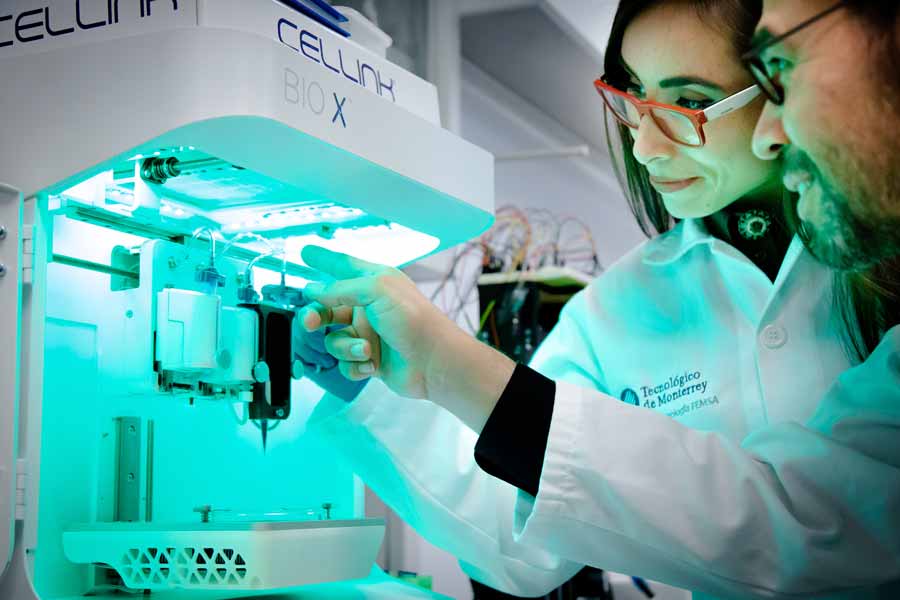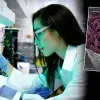Printing living tissues that can be used in human organs or testing real organ functions on electronic chips may sound like something out of science fiction. But this Tec de Monterrey laboratory is doing precisely that.
At the FEMSA Biotechnology Center on the Tec’s Monterrey campus, the laboratory run by the husband-and-wife scientist team of Dr. Grissel Trujillo and Dr. Mario Álvarez has put together a group of specialists that are working on innovative biological technologies and procedures.
“In the case of bioprinting, as human tissues and organs are very complex, we invented a 3D printer that uses bio-ink instead of plastic, to which we add living cells to create tissues,” explains Dr. Álvarez.
“Our tissues have a multi-layered, vascularized structure. They have these tiny pathways through which blood circulates, and one of the big tissue engineering challenges is emulating that structure. We’ve published a series of papers showing that we can do that through the use of hydrogels,” he adds.
“These are materials that are 90% water and 10% compounds similar to our tissues (...) so that the cells recognize them, feel comfortable, and can form tissues,” adds Dr. Trujillo.

As she explains, “This is technology we’ve invented ourselves and it’s had a lot of acceptance in the scientific community. We have about 8 papers published and different applications.”
Besides scientific papers, this work has also generated recognition. For example, Dr. Trujillo received the L’Oréal-Unesco-Conacyt-AMC award for her 3D bioprinting project in 2019. This year, PhD student Johana Bolivar, who is part of their research group, received the 2021 ISBF Young Scientist Award from the International Society for Biofabrication.
“We’re in a research group that’s working on frontier science. We do things that probably no other laboratory in the world knows how to do,” says Carlos Ceballos, whose work on microcosms of different types of bacteria has also received an award.

Their research also includes organs-on-chips, which are small containers with living and functional tissues that simulate certain functions in order to do things such as test cancer drugs. This year, two of their students excelled at a stay in Harvard by generating functions like those in the lung.
At the end of the day, the doctors say it’s about saving lives. They dream that it might someday even be possible to print a complete organ for human transplant.
“We want our technologies to reach people. For instance, a tissue fabricated with chaotic bioprinting could reach patients and reactivate the life and functionality of people’s organs,” says Dr. Álvarez.
ALSO READ:





